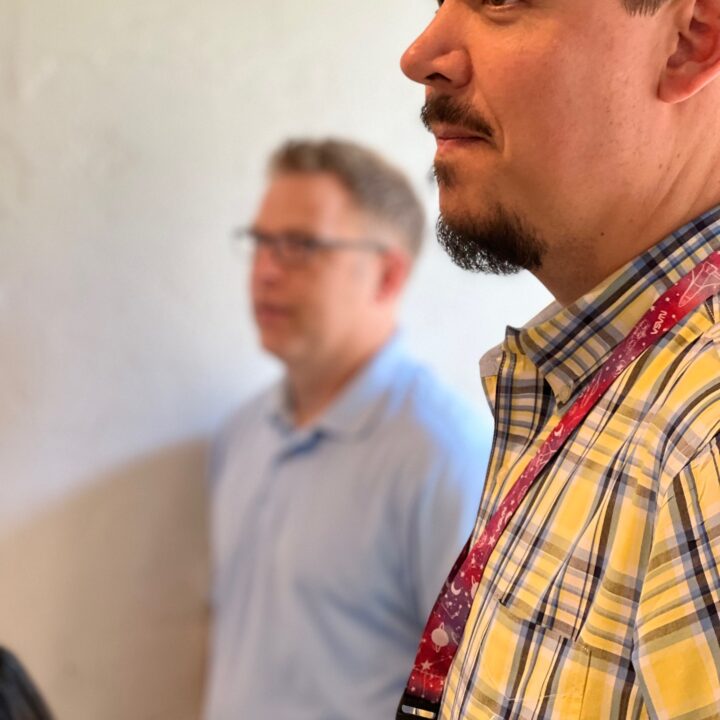If you’re thinking about scaling up at your nonprofit, your first step should be to celebrate your progress. You’re at an exciting juncture in your organization’s evolution, and conversations around expanding your operations are signs that you’re meeting your current goals and looking towards how you can spread your impact further.
That being said, growth doesn’t just happen. Nonprofits looking to scale successfully need to make calculated, data-informed decisions about where to make investments. Here are three tips from the Asemio experts on how to use data and technology to help you expand your operations.
1. Invest in the Evolution of Your Data Systems
One of the most common problems that data-informed nonprofits face as they scale is maintaining the integrity of their data systems. When systems are not built to evolve along with an organization, they can become less useful over time and create frustration. Growth will bring the need for greater capacity, higher efficiency, and strong foundational practices that can propel you forward. It’s important to factor in how your data systems and technology will need to evolve to make those changes possible.
Whether you’re transitioning from manual data collection to a digital platform or reinvesting in an existing digital system, you should budget time, money, and other resources for enhancing your data collection, analysis, and reporting processes. Significant digital data projects should involve either an on-staff technology expert or a technology partner to ensure success. If you aren’t sure what the next step is in your data system’s evolution, you can use our Data & Technology Advancement Model to assess where you’re at and what investments will help you get you where you want to go.
If your data and technology goals are integral parts of your growth strategy, you’ll avoid the pain that comes with “left-behind” and out of date systems and an unnecessary cycle of spending and frustration that hold organizations back from focusing on their missions.
2. Commit to Culture & Training
Your technology practices can either propel or slow the productivity of your organization. As you grow, build in cultural and training practices around data and technology that help team members fully benefit from the tools at hand, ensure everyone understands best practices for data management, and instill confidence in your staff to make data-informed decisions.
- Conduct trainings on data entry best practices such as using agreed-upon naming conventions and using fields for their intended purpose. Explain how the data they’re collecting is used and why poor data integrity can have a significant downstream impact. Help staff at all levels to understand why standardization and adhering to best practices is critical to the organization’s success and make it easier for people to remember the value of their role with recurring sessions.
- Think ahead when you make changes and give staff plenty of time to prepare for and adjust to new systems or processes. Change can be disruptive and planning ahead can make the difference between seamless transitions and confusing changes.
- Keep your team engaged. Learning new systems can be difficult and sometimes even the most well-intentioned team members take shortcuts with process. Set goals, gamify the experience, and acknowledge when processes and best practices are being followed well. Be sure to collect feedback from your team as well so you know where the sources of friction exist and can make a plan to resolve those pain points.
Remember to be receptive to feedback about the quality of your infrastructure and that evolution and maintenance are part of having healthy, useful technology systems. We have a blog post dedicated to how you can build data and technology into your culture, to get you started on the right path.
3. Build a Data-Informed Outreach and Marketing Strategy
We are in the digital age and your nonprofit’s online presence is a large megaphone for your mission. While we aren’t experts in marketing, we are experts at using data and technology to deliver powerful data-informed insights. These insights can help you communicate your purpose, your wins, and your goals as an organization through a powerful narrative. We’ve seen how effectively using these insights in your communication strategy can transform your relationship with your community and supporters as they watch you grow.
As you engage with donors, supporters, clients, and the community, be sure to share those insights with your different audiences. Consider how you can increase your visibility online and improve your SEO score, so that more people can learn about your work. Start a newsletter that provides valuable information and encourage those in your network to share it with others. Build creative fundraising campaigns that make contributors feel valued. Be on the lookout for innovative ways to market yourself whether it’s a popular social media platform or grassroots engagement with the community. Make your data-informed insights a key part of your communications and don’t be afraid of reaching out ‘too often.’
All three of these tips for successfully scaling alongside your technology share the common practice of planning. Instead of being reactive to the problems and challenges that arise in your technical infrastructure as the organization grows, be proactive and make changes intentionally, ahead of time, so your team can adjust to and champion them. If you’re feeling out of your element, consider bringing on extra support.






